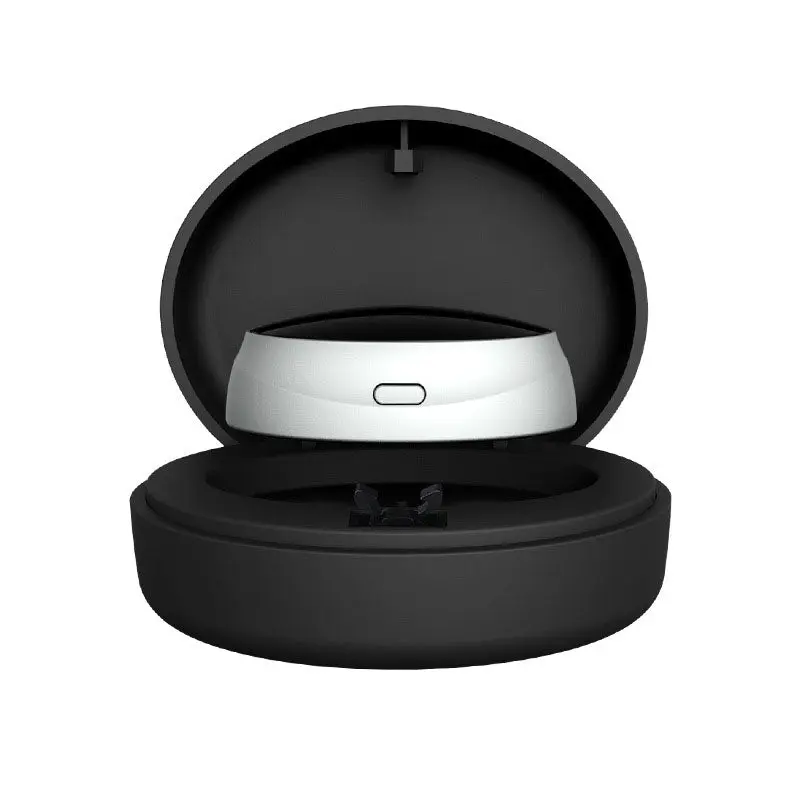Snoring can be a frustrating issue that affects not only the person who snores but also their partner’s sleep quality. In this blog, we’ll explore some innovative anti-snoring devices that promise to transform your nights from restless to restful. Let’s discover how these gadgets work, the science behind them, and review several popular options on the market today.
Understanding the Impact of Snoring on Sleep Quality
Snoring is more than just a nuisance; it can lead to disrupted sleep for both the snorer and their partner. In this section, we’ll delve into how snoring affects overall sleep quality and what health implications may arise from poor sleep. Research indicates that constant disturbance of sleep can result in irritability, lack of focus during the day, and even potential health risks such as high blood pressure and heart disease. It’s essential to address this issue proactively.
Moreover, the emotional toll of snoring should not be underestimated. Many couples find themselves sleeping in separate rooms, leading to a strain on intimacy and connection. According to Sleep Foundation, the impact is profound, as lack of sleep can contribute to stress and anxiety, creating a vicious cycle that further exacerbates snoring. Understanding these implications underscores the importance of finding a solution.
Ultimately, acknowledging the issue is the first step towards resolving it. When both partners prioritize better sleep through proper intervention, they not only improve their health but also strengthen their relationship. Transitioning from separate bedrooms to a shared peaceful night can transform more than just sleep; it can enhance overall well-being.
How Anti-Snoring Devices Work
Anti-snoring devices come in various forms, including mouthpieces, nasal strips, and positional therapy aids. Here, we’ll discuss the technology behind these devices and how they help alleviate snoring. Most anti-snoring devices function by adjusting either the position of the jaw or the airflow in the nasal passages. By promoting a clearer airway, these devices reduce the vibrations that cause snoring. For example, the widely used mandibular advancement devices gently reposition the jaw forward, decreasing airway resistance.
Another interesting option is nasal strips, which physically open the nostrils to increase airflow. While they might appear simple, their efficiency in improving breathability is backed by research. The significance of open nasal passages cannot be overstated, as they assist not only in reducing snoring but also in improving sleep quality overall. In fact, studies noted on WebMD suggest that better airflow can lead to deeper, more restorative sleep.
Positional therapy aids may also revolutionize your sleep health. These devices encourage side sleeping, a position known to significantly reduce snoring. By preventing rollovers to the back, they keep the airway open throughout the night, allowing for a more peaceful rest. For many, a simple change in sleeping position could lead to noticeable improvement, making it essential for snorers to explore each type of anti-snoring device available.
Top Anti-Snoring Devices Reviewed
In this section, we’ll provide reviews of several popular anti-snoring devices available today. We’ll cover their features, effectiveness, and user feedback to help you make an informed choice. First on our list is the Zyppah Anti-Snoring Device, which is a comfortable mouthpiece that aligns the jaw and tongue to keep the airway unobstructed. Users have reported significant decreases in snoring, enhancing their sleep quality. It’s also customizable, making it easy to adjust for comfort.
Next up is SnoreRx, a popular dental device that allows for easy adjustment to fit each user’s mouth perfectly. Its durability is another highlight; many users praise it for lasting throughout their nightly routine. Again, Healthline suggests that it effectively minimizes snoring, offering a flexible solution that accommodates different mouth structures. On top of all that, it’s important to highlight that this device is designed to be non-invasive, meaning there’s no need for surgery or extensive procedures to enjoy a better night’s sleep.
If you’re looking for a solution that’s small, lightweight, and user-friendly, then the SnoreRx might just be the answer you need. Simply pop it in before bed, and you’re on your way to improved sleep quality for both you and your partner. For more innovative anti-snoring options, check out this non-invasive solution from Best Gifter Ever that promises ease of use and effective results, transforming your nights from restless to peaceful.
Lastly, we take a look at Breathe Right Nasal Strips, often overlooked yet a powerful solution for snorers who breathe primarily through their noses. These strips lift the nostrils to improve airflow naturally, and many users rave about their ability to offer instant relief. Although they might not work for everyone, they can be an effective, non-intrusive starting point for those looking to tackle snoring easily.
Tips for Choosing the Right Device
Selecting the right anti-snoring device can be daunting given the numerous options available. Here are some key factors to consider, including comfort, effectiveness, and your specific snoring patterns. Firstly, comfort is non-negotiable—If the device isn’t comfortable to wear, it will likely end up unused. Investing time in finding a comfortable fit should be your priority.
Additionally, effectiveness can vary widely from one device to another. Reading snoring device reviews is invaluable; they not only provide insight into how well a device works but also highlight user experiences. Paying attention to feedback regarding effectiveness can save you from making a costly mistake. Consider your unique snoring situation too; factors like whether you snore primarily through your mouth or nose will guide your choice.
Finally, consult with your doctor before making a decision. Medical professionals can provide guidance tailored to your health needs, ensuring that you select a device that effectively addresses your snoring issue. Don’t forget, the goal is to enhance sleep quality not only for yourself but also for your partner, making careful consideration essential.
Lifestyle Changes to Complement Anti-Snoring Devices
While anti-snoring devices can be highly effective, combining them with certain lifestyle changes can further enhance sleep quality. We’ll share helpful tips on sleep positions, weight management, and avoiding certain substances. Firstly, let’s discuss sleep positions. As previously mentioned, sleeping on your side is the best way to reduce snoring. If you prefer sleeping on your back, consider using a wedge pillow to elevate your head slightly; this can help maintain open airways.
Maintaining a healthy weight also plays a crucial role. Excess weight can contribute to fatty tissues around the neck, leading to increased snoring. Engaging in regular physical activity and focusing on a balanced diet can significantly impact not just snoring but overall health. Incorporating even moderate exercise gradually can lead to noticeable improvements, making lifestyle adjustments a key component of your snoring solution.
Finally, consider avoiding alcohol and sedatives before bed. Both substances can relax the throat muscles excessively, increasing the likelihood of snoring. Opting for a soothing herbal tea instead might aid in relaxation without compromising your airway. By incorporating these lifestyle changes alongside your chosen anti-snoring device, you maximize your chances of improved sleep quality and a quieter night for all involved.
Restoring Peaceful Nights
In conclusion, investing in an anti-snoring device can provide a pathway to peaceful nights and improved sleep quality for both you and your partner. By exploring the options available, you can find the solution that works best for your unique situation. Don’t let snoring disrupt your sleep any longer; take the first step towards quieter nights today!



































































































